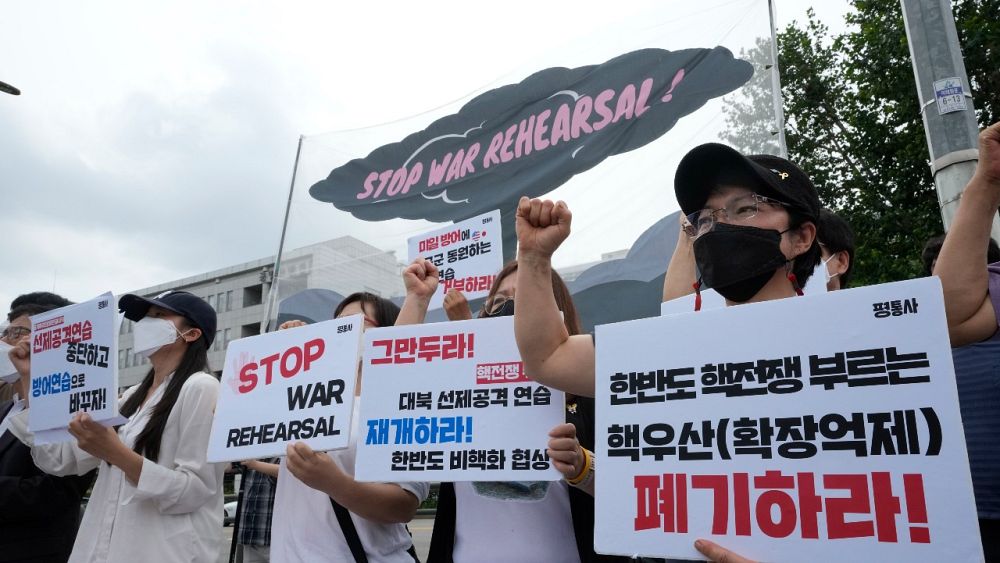South Korea and US begin largest war games in years amid North threats

The United States and South Korea began their biggest combined military training in years Monday as the allies seek to tighten readiness over North Korea’s potential weapons tests.
The Ulchi Freedom Shield exercises will continue through September 1 in South Korea and include field exercises involving aircraft, warships, tanks and potentially tens of thousands of troops.
While Washington and Seoul describe their exercises as defensive, North Korea portrays them as invasion rehearsals that justify its nuclear weapons and missiles development.
Cho Joong-hoon, a spokesperson of South Korea’s Unification Ministry, which handles inter-Korean affairs, said the South hasn’t immediately detected any unusual activities or signs from the North.
The United States and South Korea had cancelled some of their regular drills and reduced others to computer simulations in recent years to create space for diplomacy with North Korea and because of COVID-19 concerns.
Ulchi Freedom Shield, which started along with a four-day South Korean civil defense training program led by government employees, will reportedly include simulated joint attacks, front-line reinforcements of arms and fuel, and removals of weapons of mass destruction.
The drills came after North Korea last week dismissed South Korean President Yoon Suk Yeol’s offer to exchange denuclearization steps and economic benefits, accusing Seoul of recycling proposals Pyongyang has long rejected.
Kim Yo Jong, the increasingly powerful sister of North Korean leader Kim Jong Un, described Yoon’s proposal as foolish and stressed that the North has no intentions to barter away an arsenal her brother apparently sees as his strongest guarantee of survival.
She harshly criticized Yoon for continuing military exercises with the U.S. and also for Seoul’s failure to stop South Korean civilian activists from flying anti-Pyongyang propaganda leaflets and other “dirty waste” across the border by balloon.
Kim Yo Jong earlier this month warned of “deadly” retaliation against South Korea over a recent North Korean COVID-19 outbreak, which Pyongyang dubiously claims was caused by leaflets and other objects floated by southern activists. There are concerns that the threat portends a provocation which might include a nuclear or missile test or even border skirmishes, and that the North may try to raise tensions sometime around the allied drills.
In an interview with Associated Press Television last month, Choe Jin, deputy director of a think tank run by North Korea’s Foreign Ministry, said the United States and South Korea would face “unprecedented” security challenges if they don’t drop their hostile military pressure campaign against North Korea, including joint military drills.
Last week’s launches of two suspected cruise missiles extended a record pace in North Korean missile testing in 2022, which has involved more than 30 ballistic launches, including the country’s first demonstrations of intercontinental ballistic missiles in nearly five years.
North Korea’s heightened testing activity underscores its dual intent to advance its arsenal and force the United States to accept the idea of the North as a nuclear power so it can negotiate economic and security concessions from a position of strength, experts say.
Kim Jong Un could up the ante soon as there are indications that the North is preparing to conduct its first nuclear test since September 2017, when it claimed to have developed a thermonuclear weapon to fit on its ICBMs.
